You don’t have to grow a dull vegetable garden full of vegetables that no one wants to eat. Knowing which vegetables to grow in your home garden will keep your family fed, healthy, and happy.
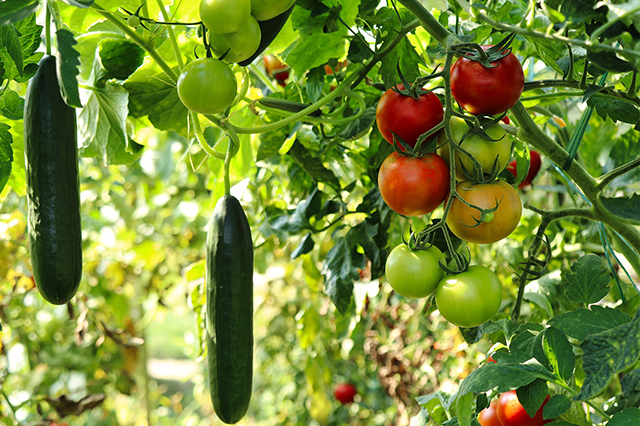
gardeninginfo-online.com gathered growing information on 5 easy-to-grow vegetables for your home garden, their needs, and when to harvest them.
1. Lettuce (Lactuca sativa)
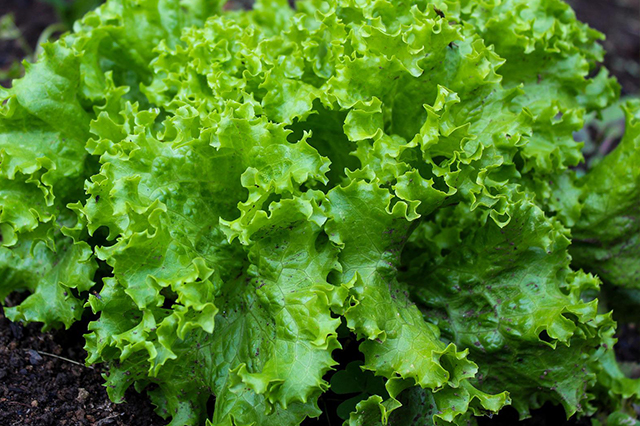
Lettuce or Lactuca sativa is a leafy annual or biennial plant in the Asteraceae family grown specifically for its leaves used as a salad green. The lettuce plant can vary in size, shape, and leaf type(depending on the variety), but generally, this plant’s leaves will form a dense head or loose rosette.
Uses – Lettuce can be eaten in many ways besides being chopped up in a salad. Here are a few of those alternatives:
- Juice or green smoothie
- Lettuce wraps
- Topped like a cracker
- Layered into spring rolls and wraps
- Seared or sautéed
- Grilled
- Braised
Sun Requirements – Ideally, lettuce plants need at least 6 hours of sun per day. However, lettuce will still grow if it receives less than that.
Soil Requirements – Well-drained sandy loam soils with a loose consistency and organic matter help this leafy vegetable thrive.
Ideal Soil pH – Soil best supports lettuce growth with a 6.0 to 6.5 pH.
Hardiness Zone – 2 through 11
Expected Harvest Time – Leafy lettuce varieties can reach maturity in as little as 30 days but can be harvested when they reach your desired size. Other lettuce varieties need 6 to 8 weeks to reach harvesting size.
2. Tomatoes (Solanum lycopersicum)
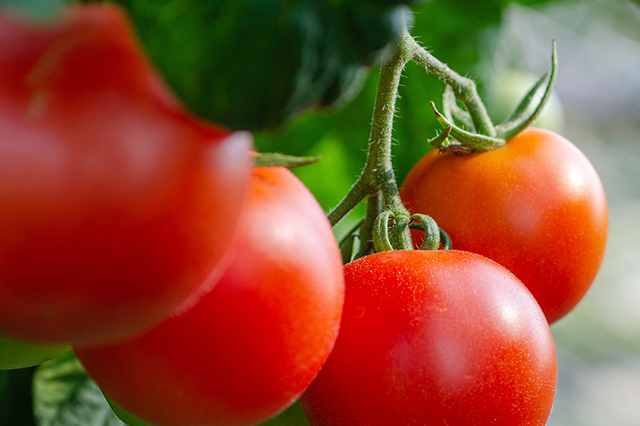
Tomatoes are usually found to be red, scarlet, or yellow. However, green and purple varieties can be cultivated, and they vary in shape from spherical to oval and elongated to pear-shaped. Individual fruits contain at least two cells or chambers filled with tiny seeds immersed in a jellylike mildly acidic pulp.
Uses – Tomatoes are beloved for their culinary versatility. Here are a few ways fresh tomatoes can be used:
- Caprese Salad
- Gazpacho
- Bruschetta
- Sandwich Topping
- Salsa
- Pasta Sauce
- Lasagna
Sun Requirements – Healthy tomato growth and fruit production require eight hours of direct daily sunlight.
Soil Requirements – Tomatoes will thrive in loam and sandy loam soils, but these plants will grow in nearly all soil types except heavy clay.
Ideal Soil pH – Tomato plants thrive in slightly acidic soil with a 6.2 to 6.8 pH.
Hardiness Zone – 2 through 11 (tomato plants will keep growing until the first frost).
Expected Harvest Time – Tomatoes will typically be ready to harvest in 60-85 days after planting seedlings in your garden.
3. Peppers (Capsicum)

Peppers are vegetables with variable shapes, sizes, and colors. Pepper varieties can grow green, red, yellow, orange, or even black fruits. Its taste can vary between sweet and spicy.
Uses – Here are a few ways garden-grown peppers can be used:
- Stuffed with Tomato Couscous
- Bell Pepper Cornbread
- Roasted Pepper & Butternut Squash Soup
- Roasted Red Pepper Soup
- Turkey Stuffed Bell Peppers
Sun Requirements – Pepper plants need at least 6 to 8 hours of daily sunlight.
Soil Requirements – Peppers prefer rich, sandy, or loamy soil, which keeps the ground well-drained and warm.
Ideal Soil pH – Peppers thrive in slightly acidic soil with a 6.5 to 7.0 pH.
Hardiness Zone – 9 through 11 (must be shielded from frost in colder zones)
Expected Harvest Time – With ideal growing conditions, peppers will typically be ready for harvest within 70 to 80 days.
4. Cucumbers (Cucumis sativus)
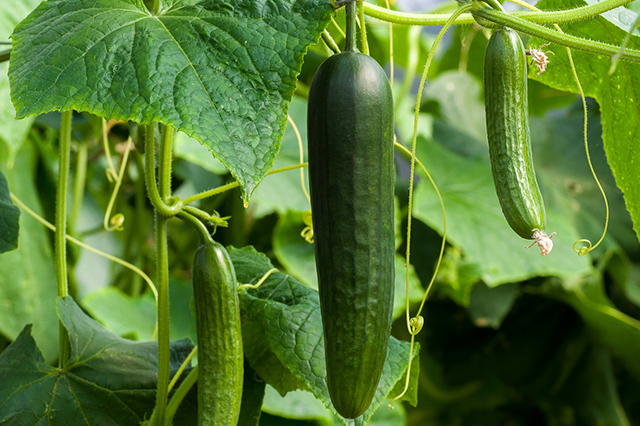
The cucumber plant is an annual with a rough trailing stem. Its hairy leaves have three to five pointed lobes, and the stem bears branched tendrils. Its five-petaled yellow flowers are unisexual, and the cucumbers are a long, thin vegetable with tough, green skin and wet, semi-transparent flesh.
Uses – These are a few ways garden-grown cucumbers can be used:
- Pickle them
- Make frozen treats
- Add them to smoothies
- Toss them in drinks
- Make gazpacho
- Add them to a stir fry
Sun Requirements – Cucumbers thrive in full sun but will grow with just 5 hours of daily sun.
Soil Requirements – Cucumbers do best in loose sandy loam soil. However, they can be grown in nearly any well-drained soil.
Ideal Soil pH – Cucumbers thrive in slightly acidic soil with a 6.0 to 6.5 pH.
Hardiness Zone – 4 through 12
Expected Harvest Time – This species requires a long growing season, and most varieties are ready for harvest in 50 to 70 days from planting.
5. Brussels sprouts (Brassica oleracea var. gemmifera)
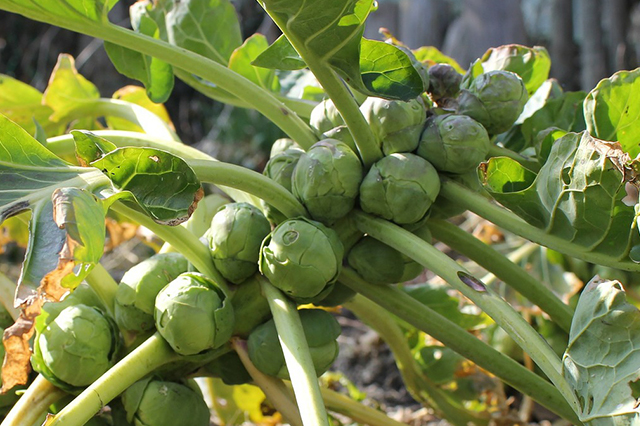
Brussel sprouts are a cultivar of cabbage in the Brassicaceae family grown for their edible tiny leafy green buds, resembling mini cabbages. The plant has long, smooth leaves which can be green to purple in color and are arranged alternately on the stem.
Uses – Usually served as a side dish, here are some more ways Brussels sprouts can be prepared:
- Roasted Brussels sprouts with garlic
- Oven-roasted Brussels sprouts with balsamic vinegar
- Holiday dinner side vegetables
- Roasted Brussels sprouts accompanying butternut squash and cranberries
Sun Requirements – Brussels sprouts require a minimum of 6 hours of daily sunlight for optimal growth.
Soil Requirements – This vegetable can be grown in nearly any well-drained, fertile soil.
Ideal Soil pH – Brussels sprouts grow best in soil with a pH between 6 and 7.
Hardiness Zone – 2 through 10
Expected Harvest Time – Brussels sprouts are typically ready for harvest 90 to 110 days after planting.
Garden Vegetables
In this article, you discovered several popular and easy-to-grow vegetables for your home garden, what they require for maximum growth, and when they should be harvested.
Growing your own vegetables can be rewarding with a large harvest, food on your table eliminating store-bought vegetables, and just better-tasting food.
Not planting vegetables in your home garden will leave you dependent on your grocery store’s supply chain availability, exposed to potential chemical consumption from insecticides, and inferior vegetable quality.
Sources:
extension.umn.edu/vegetables/growing-peppers
extension.umd.edu/resource/brussels-sprouts
extension.uga.edu/publications/detail.html?number=C1034&title=Growing%20Cucumbers%20in%20the%20Home%20Garden
njaes.rutgers.edu/fs678/
hgic.clemson.edu/factsheet/lettuce/
The post 5 Must Have Vegetables in Your Home Garden appeared first on http://gardeninginfo-online.com.
No comments:
Post a Comment